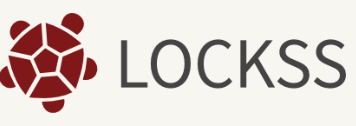Urolitiasis: epidemiología, diagnóstico y manejo
DOI:
https://doi.org/10.56183/iberojhr.v4i2.682Palavras-chave:
urolitiasis, epidemiología, tomografía computarizada, tratamiento médico, litotripcia extracorpórea, nefrolitotomía.Resumo
La urolitiasis es una enfermedad caracterizada por la formación de piedras en el sistema urinario, considerada una de las patologías más antiguas y comunes. Con una prevalencia que abarca entre el 2% y 20% de la población mundial y una tasa de recurrencia del 30-50% en cinco años, tiene una etiología multifactorial influida por factores geográficos y raciales. Más del 80% de los casos se deben a cálculos de oxalato o fosfato de calcio. El tratamiento incluye opciones médicas o quirúrgicas como la litotricia por ondas de choque extracorpóreas (LEOC), ureteroscopia (URS), nefrolitotomía percutánea (NLPC) o cirugía abierta. Si bien los métodos endoscópicos y LEOC han revolucionado el manejo, sus altos costos, riesgo de lesión renal y falta de prevención de nuevos cálculos siguen siendo limitantes. Comprender mejor esta enfermedad resulta crucial para avanzar en su tratamiento. Esta revisión ofrece un panorama de su epidemiología, etiología, síntomas, diagnóstico y abordaje terapéutico.
Referências
Bishop K, Momah T, Ricks J. Nephrolithiasis. Prim Care. 2020 Dec;47(4):661-671. doi: 10.1016/j.pop.2020.08.005.
Ang AJS, Sharma AA, Sharma A. Nephrolithiasis: Approach to Diagnosis and Management. Indian J Pediatr. 2020 Sep;87(9):716-725. doi: 10.1007/s12098-020-03424-7.
Chen Z., Prosperi M., Bird V.Y. Prevalence of kidney stones in the USA: The National Health and Nutrition Evaluation Survey. J. Clin. Urol. 2019;12:296–302. doi: 10.1177/2051415818813820.
Stamatelou K, Goldfarb DS. Epidemiology of Kidney Stones. Healthcare (Basel). 2023 Feb 2;11(3):424. doi: 10.3390/healthcare11030424.
Moftakhar L., Jafari F., Johari M.G., Rezaeianzadeh R., Hosseini S.V., Rezaianzadeh A. Prevalence and risk factors of kidney stone disease in population aged 40–70 years old in Kharameh cohort study: A cross-sectional population-based study in southern Iran. BMC Urol. 2022;22:205. doi: 10.1186/s12894-022-01161-x.
Akram M, Jahrreiss V, Skolarikos A, Geraghty R, Tzelves L, Emilliani E, Davis NF, Somani BK. Urological Guidelines for Kidney Stones: Overview and Comprehensive Update. J Clin Med. 2024 Feb 16;13(4):1114. doi: 10.3390/jcm13041114.
Ferraro PM, Bargagli M, Trinchieri A, Gambaro G. Risk of Kidney Stones: Influence of Dietary Factors, Dietary Patterns, and Vegetarian-Vegan Diets. Nutrients. 2020 Mar 15;12(3):779. doi: 10.3390/nu12030779.
Chewcharat A., Thongprayoon C., Vaughan L.E., Mehta R.A., Schulte P.J., O’Connor H.M., Lieske J.C., Taylor E.N., Rule A.D. Dietary Risk Factors for Incident and Recurrent Symptomatic Kidney Stones. Mayo Clin. Proc. 2022;97:1437–1448. doi: 10.1016/j.mayocp.2022.04.016.
Wagner CA. Etiopathogenic factors of urolithiasis. Arch Esp Urol. 2021 Jan;74(1):16-23. English, Spanish. PMID: 33459618.
Wang Z, Zhang Y, Zhang J, Deng Q, Liang H. Recent advances on the mechanisms of kidney stone formation (Review). Int J Mol Med. 2021 Aug;48(2):149. doi: 10.3892/ijmm.2021.4982.
Li X, Zhu W, Lam W, Yue Y, Duan H, Zeng G. Outcomes of long-term follow-up of asymptomatic renal stones and prediction of stone-related events. BJU Int. 2019 Mar;123(3):485-492. doi: 10.1111/bju.14565.
Darrad MP, Yallappa S, Metcalfe J, Subramonian K. The natural history of asymptomatic calyceal stones. BJU Int. 2018 Aug;122(2):263-269. doi: 10.1111/bju.14354.
Schrag TA, Diarra D, Veser J. Prevention, diagnosis, and treatment of urolithiasis in geriatric patients - differences, similarities and caveats in comparison to the general population. Curr Opin Urol. 2024 May 1;34(3):154-165. doi: 10.1097/MOU.0000000000001173.
Gil A, Kushnir D, Frajewicki V. The Association of Urolithiasis with Uricosuria, Uricemia and their Combination. Isr Med Assoc J. 2024 Jan;26(1):18-23.
Dell'Aversana F, Pezzullo M, Scaglione M. Imaging in Urolithiasis. Urol Clin North Am. 2024 Feb;52(1):51-59. doi: 10.1016/j.ucl.2024.07.007.
Shastri S, Patel J, Sambandam KK, Lederer ED. Kidney Stone Pathophysiology, Evaluation and Management: Core Curriculum 2023. Am J Kidney Dis. 2023 Nov;82(5):617-634. doi: 10.1053/j.ajkd.2023.03.017.
Ng DM, Haleem M, Mamuchashvili A, Wang KY, Pan JF, Cheng Y, Ma Q. Medical evaluation and pharmacotherapeutical strategies in management of urolithiasis. Ther Adv Urol. 2021 Feb 24;13:1756287221993300. doi: 10.1177/1756287221993300.
Wales R, Munshi F, Penukonda S, Sanford D, Pareek G. The Surgical Management of Urolithiasis: A Review of the Literature. R I Med J (2013). 2023 Dec 1;106(11):36-40.
Doré B. Techniques et indications de la lithotritie extracorporelle (LEC) en urologie [Extra corporeal shock wave lithotripsy (ESWL) procedure in urology]. Ann Urol (Paris). 2005 Jun-Sep;39(3-4):137-58. French. doi: 10.1016/j.anuro.2005.07.002.
De Coninck V, Keller EX, Somani B, Giusti G, Proietti S, Rodriguez-Socarras M, Rodríguez-Monsalve M, Doizi S, Ventimiglia E, Traxer O. Complications of ureteroscopy: a complete overview. World J Urol. 2020 Sep;38(9):2147-2166. doi: 10.1007/s00345-019-03012-1.
Maliki A, Fitriani R, Soebadi MA, Djatisoesanto W. Comparison of efficacy and safety of open and laparoscopic proximal ureterolithotomy for ureteral stone management: A systematic review and meta-analysis. Narra J. 2024 Apr;4(1):e679. doi: 10.52225/narra.v4i1.679.
Müller PF, Schlager D, Hein S, Bach C, Miernik A, Schoeb DS. Robotic stone surgery - Current state and future prospects: A systematic review. Arab J Urol. 2017 Nov 2;16(3):357-364. doi: 10.1016/j.aju.2017.09.004.
Downloads
Publicado
Como Citar
Edição
Seção
Licença
Copyright (c) 2024 Maythe Solange Moya Figueroa, Andrea Marina Pulla Carrillo, Kevin Steeven Escobar Rios, María Virginia Salinas Capa, Daniel Sebastián Altamirano Castro, Eugenia Soledad Pazmiño Romero, Doménica Estefanía Palacios Contreras, Anette Nicole Beltrán Abalco

Este trabalho está licenciado sob uma licença Creative Commons Attribution-NonCommercial-NoDerivatives 4.0 International License.



